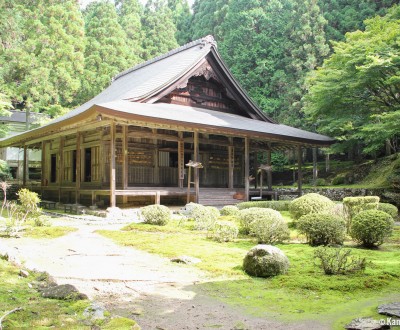Ohara
The Tendai Buddhism pilgrimage in the North of Kyoto
Ohara is a small rural town in the mountains located in Sakyo ward in the north-east of Kyoto. It is home to several Buddhist temples – all Tendai branch – including Sanzen-in, considered the main complex. A peaceful destination, Ohara is however renowned for its autumn colors during Momiji season in November.
Mountains in the north of Kyoto conceal numerous gems, and the lush greenery of Ohara is obviously one of them. The village was built on the mountainside, along Takano river, and spreads under the surrounding cedar forest where several Buddhist sites await visitors:
- On the eastern side, the main temple Sanzen-in, and the neighboring Hosen-in, Shorin-in, Jikko-in and Raigo-in;
- On the western side, the second important place, Jakko-in.
Ohara is an excellent place for excursion in nature and spiritual experience. The shadowy forest provides a cooler climate in the hottest days of the year, and a wonderful vegetal scenery in any season. Summer offers an interesting view on rice paddies. In autumn 🍁, visitors are attracted from mid-November by the reddening of maples leaves.
The alleys leading to the temples’ entrances are lined with small shops and souvenir boutiques, their front stores nicely decorated to the pleasure of passersby. Some of them hide small restaurants serving local, seasonal food, mainly prepared from vegetables at small prices.
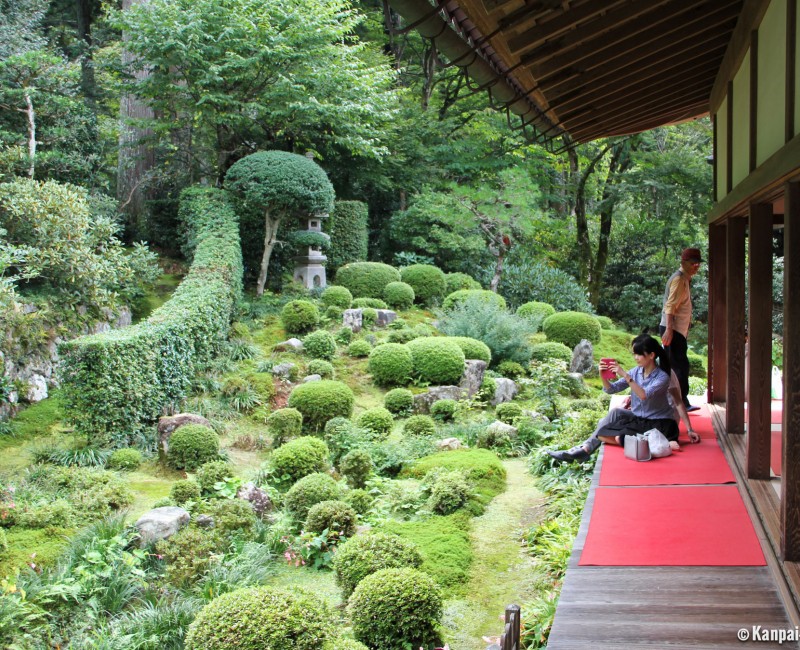
Sanzen-in
Built in the beginning of Heian Period (794-1185) by its founder monk Saicho, Sanzen-in belongs to the Tendai branch of Japanese Buddhism. A religious place of significant importance, several members of the Imperial family served in priesthood and it was thus integrated among the five Monzeki temples in Kyoto.
Sanzen-in is a vast complex harmoniously displaying pavilions and green spaces. Its moss garden surrounding Shuheki-en pond reminds the beauty of Kokedera. The large size of the temple’s grounds allows for an enchanting exploration at several levels, inside the buildings and in the gardens. Yusei-en garden is characterized by spherical-shaped boxwoods, and Ajisai-en is enjoyable in June, when its hydrangeas bloom.
The path is ornamented with stone statues, among which are the famous Warabe-Jizo cute statuettes, in an impish childish pose. Amida Buddha, Fudo Myoo and Kannon are the three deities enshrined, the latter sheltered in the pavilion located in the remotest part of the site.
As a little extra to the visit, it is possible to have a shiso matcha tea, sprinkled with golden flakes, to enjoy near Konjiki-fudo-do while admiring Ajisai-en garden.
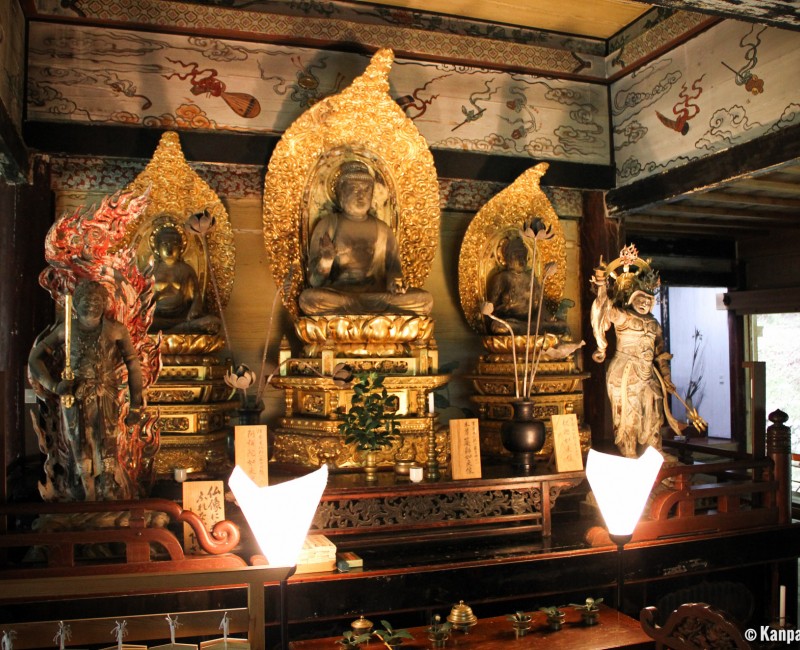
Raigo-in
Slightly away from the most frequented alleys, Raigo-in is small but offers a pleasant short walk. In its main hall, three representations of Amida Buddha are sheltered.
Founded in the 9th century, the temple recovered its influence when monk Ryonin, founder of the Yuzu Nembutsu-shu school of the Pure Land Buddhist sect, dedicated the place to sutra chanting, that is still performed nowadays. A little bit farther, along a walking path, there is a huge black bell dating back to Muromachi period (1333-1573).
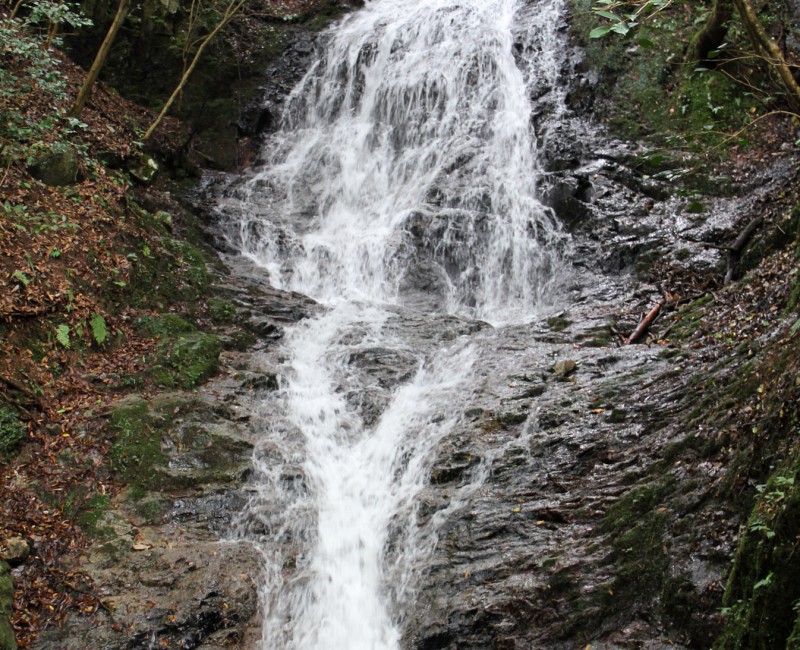
Otonashi No Taki
Otonashi No Taki is a waterfall nestled deep into the forest and is to be discovered at the end of an upward earthen path. Water flows directly on the rock, which makes it weirdly quiet. Legend has it that the more Ryonin came to practice chanting sutra in front of the waterfall, the more his voice resonated with the waterfall sound, to the point the latter became inaudible. Hence the place’s nickname of "silent waterfall."
It is also said that one can hear Buddhist chants instead of the sound of the waterfall, but one must be silent to be able to hear them.
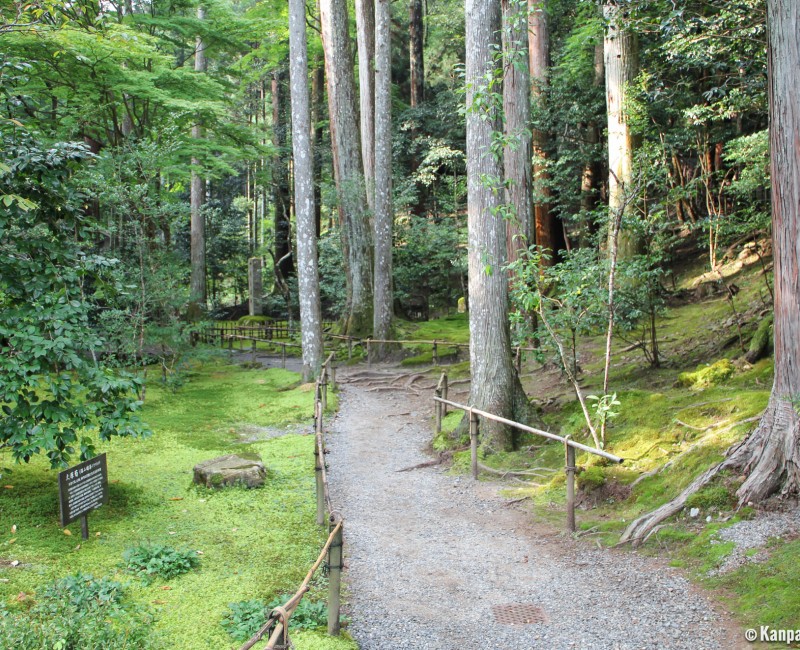
Jakko-in
Located at the opposite of Ohara’s main attractions, this temple complex is reachable after twenty minutes ‘walk in the lovely Japanese countryside. The walk starts at the main bus stop. Note that there are no signs in English and visitors must memorize the temple’s name in Japanese (寂光院) or use their GPS. However, access is easy when following the main road.
Jakko-in temple is a former Buddhist convent built in the heart of the forest at the end of the 6th century, under the protection of prince Shotoku Taishi. Unfortunately, several of its buildings were damaged in 2000 by a large fire 🔥, that even burnt an old pine, of which only the trunk remains. That is why one can't help feeling a contrast between the main building’s traditional architecture and the modernity of its materials. To end the tour, a small free museum exhibits a couple of relics, manuscripts, and miscellaneous Antique objects.
Jakko-in is also known as the last residence of Kenreimon-in, the last member of the Taira clan that ruled over Japan until 1185. After her family was defeated, and unable to die, she decided to retire as a nun. She stayed until her death, immersing in prayers, especially for her son, Emperor Antoku, who perished drowned at 6 years old, hence the presence of a Jizo statue, protector of children.
On a side note, Sanzen-in and Jakko-in temples are partially viewable on Google Street View.

